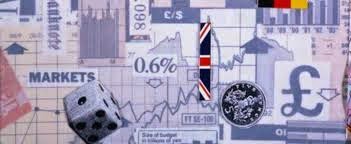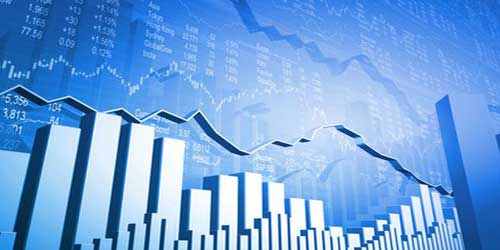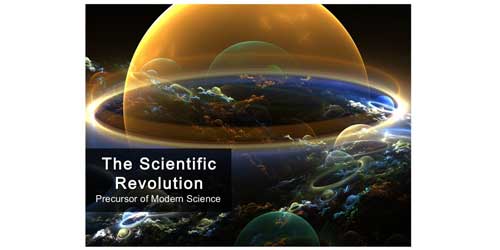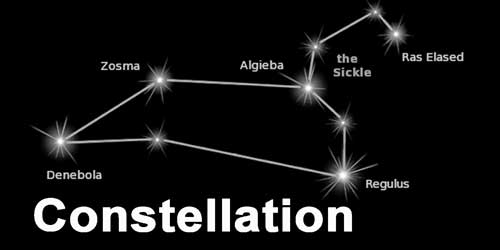
Things You Need to Know About Mutual Funds

Most Interesting Facts About Stock Market

A stock market, equity market or share market is the aggregation of buyers and sellers of stocks (also called shares); these may include securities listed on a stock exchange as well as those only traded privately. A stock exchange is a place or organization by which stock traders (people and companies) can trade stocks. Companies may want to get their stock listed on a stock exchange.
Most Interesting Facts About Stock Market
- The oldest stock exchange in the world started in Antwerp, Belgium, in 1460.
- The oldest stock exchange in the United States, opened in Philadelphia, in 1790.
- Wall Street was laid out behind a 12-foot-high wood stockade across lower Manhattan in 1685. The stockade was built to protect the Dutch settlers from British and Native American attacks.
- The first company listed on the New York Stock Exchange was, the Bank of New York, in 1792.
- The highest price paid for a seat on the NYSE was $2,650,000, in 1999. The lowest price paid for a seat, was $4,000, in 1876.
- The Dow Jones Industrial Average first closed over 100 in 1906. It first closed over 1,000 in 1972. It first closed
over 10,000 in 1999. - The first stock tickers and ticker tapes were used in 1867.
- The stock, First Midwest Federal, has CASH, as its symbol. The stock, Lacrosse Footwear, has BOOT, as its symbol.
- The American Stock Exchange was originally called, “The Curb”. This is because traders first started out on the streets of New York City, standing by the curb.
- The NASDAQ Stock Exchange began in 1971. At that time, its main focus was on OTC stocks. The name is an acronym for National Association of Securities Quotation. Currently, the NASDAQ consists mainly of technology stocks.
- Wall Street began on May 17, 1792 when 24 traders and merchants signed the Buttonwood Agreement.
- The Massachusetts Investors Trust was the first mutual fund. It was created in 1924.
- The Wellington Fund, established in 1928, was the first mutual fund that included both bonds and stocks.
- In 1934, the Securities Exchange Act created the Securities Exchange Commission – a group that is, to this day, responsible for preventing fraud and enforcing laws that require companies to provide full financial disclosure to their investors.
- Wells Fargo Bank created the first index fund in 1971.
- As on December 2012, BSE was the tenth and NSE was the eleventh largest stock exchange in the world based on Market Capitalization.
- The Bombay Stock Exchange switched to an electronic trading system in 1995.
- The National Stock Exchange or NSE was the largest exchange by number of trades in equity shares in the Electronic order book in 2012 and 2011.
- 75% of the total daily stock market in India is attributed to the top 100 stocks.
- Foreign Institutional Investors are the biggest investors in Indian stocks followed by financial institutions and insurance companies and mutual funds.
- Less than 2% of Indian household saving goes into the equity markets.
Must Read:
Things you need to know about Mutual Funds
Timeline of Scientists of Scientific Revolution
The scientific revolution was the emergence of modern science during the early modern period, when developments in mathematics, physics, astronomy, biology (including human anatomy) and chemistry transformed views of society and nature. The scientific revolution began in Europe towards the end of the Renaissance period and continued through the late 18th century, influencing the intellectual social movement known as the Enlightenment.
Timeline of a Scientific Revolution
- 1600 – Galileo Galilei discovers the principle of inertia, building the stage for a rational view of motion.
- 1600 – William Gilbert finds that Earth has magnetic poles and acts like a huge magnet.
- 1600 – Galileo Galilei discovers that projectiles move with a parabolic trajectory.
- 1608 – Hans Lippershey invents the refracting telescope, which Galileo Galilei soon puts to use.
- 1609 – Galileo Galilei observes moons of Jupiter, disproving church dogma that all movement in the universe is centered on Earth.
- 1609 – Johannes Kepler publishes his first two laws of planetary motion showing that planets move in elliptical orbits around the sun.
- 1610 – John Napier publishes tables of logarithms, showing how they can be used to accelerate calculations.
- 1619 – Kepler publishes his third law of planetary motion relating the time taken for a planet to orbit the sun with its distance from the sun.
- 1621 – Willebrord Snell discovers the laws of light refraction.
- 1628 – Kepler publishes his planetary tables, the calculations for which would have taken years without Napier’s logarithms.
- 1629 – Nicolaus Cabeus finds there are two types of electric charge and notes both attractive and repulsive forces acting.
- 1632 – William Oughtred invents the slide rule. With the combined power of logarithms and slide rules, calculation speeds explode.
- 1632 – Galileo Galilei finds that the laws of motion are the same in all inertial reference frames.
- 1637 – Rene Descartes invents the Cartesian coordinate system – i.e. the x-y axis for graphs, allowing changes in quantities with time to be plotted.
- 1645 – Blaise Pascal invents the adding machine.
- 1652 – Thomas Bartholin discovers the human lymphatic system.
- 1662 – Robert Boyle publishes his law of pressure and volume in gases.
- 1654 – Blaise Pascal and Pierre de Fermat invent the mathematics of probability and statistics.
- 1656 – Christiaan Huygens discovers Saturn’s rings after building a new telescope – the world’s best in scientific revolution.
- 1657 – Pierre de Fermat uses the principle of least time in optics.
- 1658 – Jan Swammerdam discovers the red blood cell.
- c1660 – Otto von Guerkicke builds a rotating sphere from which sparks fly. Static electricity can now be generated. He demonstrates electrostatic repulsion.
- 1660 – Robert Hooke discovers that the extension of a spring or elastic material is directly proportional to the applied force.
- 1661 – Robert Boyle writes The Skeptical Chymist, with his manifesto for the science of chemistry, explaining the roles of elements and compounds, and telling scientists they must carefully observe, record and report scientific data.
- 1633 – James Gregory publishes his design for the world’s first reflecting telescope.
- 1664 – Robert Hooke uses a microscope to observe the cellular basis of life.
- 1665 – Isaac Newton invents calculus – the mathematics of change – without which we could not understand the modern world. He keeps it secret, using it to develop theories which he eventually publishes in 1687.
- 1666 – Isaac Newton discovers that light is made up of all of the colors of the rainbow, which are refracted by different amounts in a glass prism.
- 1667 – Isaac Newton builds the world’s first reflecting telescope.
- 1668 – John Wallis discovers the principle of conservation of momentum – one of the foundations of modern physics.
- 1669 – Hennig Brand becomes the first identifiable person to have discovered and isolated a new chemical element – phosphorus.
- 1674 – Antony van Leeuwenhoek discovers microorganisms.
- 1675 – Robert Boyle shows that electric repulsion and attraction act in a vacuum.
- 1676 – Ole Christensen Roemer measures the speed of light for the first time.
- 1676 – Christiann Huygens finds light can be refracted and diffracted and should be considered to be a wave-like phenomenon.
- 1684 – Gottfried Leibniz publishes his calculus, which he discovered independently of Isaac Newton. He has been working on calculus for the past decade.
- 1687 – Isaac Newton publishes one of the most important books in scientific revolution ever: Philosophiae Naturalis Principia Mathematica, revolutionizing physics and our understanding of gravity and motion.
This was a momentous century in which science moved from a state of knowledge that was in many ways little more advanced than third century BC Greece to a much more advanced, sophisticated position, paving the way for the industrial scientific revolution in the 1700s, and many more famous scientists.
Probably the greatest advantages that Renaissance scientists had over their ancient Greek predecessors were:
- The invention of the movable type printing press in 1450 by Johannes Gutenberg
- Leonardo Fibonacci brought the Hindu-Arabic number system to Europe in 1202 AD.
Also, Read:
Indian Renaissance – The Socio-Cultural Awakening
Benjamin Franklin
Depression
The term depression is used to describe a long period of sadness. It can either refer to a person’s mood where he or she is feeling sad and dejected or to describe a debilitating mental illness called major depressive disorder. To feel sad during major life crises is normal but major depressive disorder refers to a condition where there is prolonged sadness without any link to life events. Chronic, untreated depression can induce suicidal thoughts in people. But it can be treated well with antidepressant drugs if people accept their problem and consider taking treatment.
Must Read: 10 Ways to Overcome Exam Fear
Types of Depression
Depression is usually characterised by long periods of sadness. It is usually categorised into –
Major or clinical depression: People suffering from this type show signs such as – loss of appetite, low levels of energy, frequent nightmares, sleep disorders, despair and loneliness and unwillingness to do the simplest tasks.
Persistent depressive disorder: The Depressed mood that lasts for at least 2 years. A person diagnosed with persistent depressive disorder may have episodes of major depression along with periods of less severe symptoms, but symptoms must last for 2 years.
Some forms of depression are slightly different, or they may develop under unique circumstances. They include:
Postpartum depression: It is much more serious than the ‘baby blues’ that many women experience after giving birth.
Seasonal affective disorder (SAD): It is characterised by the onset of depression during the winter months when there is less natural sunlight.
Bipolar disorder: Also called manic-depressive illness, is not as common as major depression or persistent depressive disorder.
Also Read: Cure chronic diseases with yoga
Causes
It is difficult to pinpoint the exact causes that lead to depression but there can be several reasons for it. Some common ones include:
- Trauma or grief
- Work stress
- Love and relationship problems
- Family history
- Alcohol addiction
- Lack of exercise
- Obesity
Risk Factors
If you constantly feel low and sad, the chance that you may actually become depressed depends on the presence of certain physical, genetic, psychological and environmental risk factors. They are:
- Family history
- Gender
- Stressful life
- Socio-economic status
- Marital status
- Sleep disorders
- Overuse of medications
- Mental or physical ailment
- Past experience
- Tobacco and alcohol
You May Also Read: Shocking Facts About Stress
Symptoms
People with depressive illnesses do not experience all similar symptoms. The severity, frequency and duration of symptoms vary depending on the individual and his or her particular illness.
Signs and symptoms include:
- Persistent sad, anxious, or ‘empty’ feelings
- Feelings of hopelessness or pessimism
- Feelings of guilt, worthlessness, or helplessness
- Irritability, restlessness
- Loss of interest in activities or hobbies once pleasurable
- Fatigue and decreased energy
- Difficulty concentrating, remembering details, and making decisions
- Insomnia, early-morning wakefulness, or excessive sleeping
- Overeating or appetite loss
- Thoughts of suicide, suicide attempts
- Aches or pains, headaches, cramps, or digestive problems that do not ease even with treatment.
Have a Look at: Hypertension or High BP
Treatment
The treatment options normally employed to deal with depression are –
Medicines
The newest and most popular anti-depressants are called selective serotonin reuptake inhibitors (SSRIs). Fluoxetine, sertraline, escitalopram, paroxetine, and citalopram are some of the most commonly prescribed SSRIs for depression.
Therapy
Yes, counselling sessions are a huge help, if the right kind of therapy is used, and combined with medicines, depending upon the type of depression and receptivity of the person. Two main types of psychotherapies —
Cognitive-behavioural therapy (CBT) – helps people with depression restructure negative thought patterns.
Interpersonal therapy (IPT) – helps people understand and work through troubled relationships that may be causing their depression or making it worse.
Also Read: Medicines and Pharmaceutical Drugs
Complications
Depression is a serious disorder that can take a terrible toll on individuals and families. Untreated disorder can result in emotional, behavioural and physical health problems that affect every area of one’s life. Complications associated with serios disorder may include:
- Excess weight or obesity, which can lead to heart disease and diabetes
- Alcohol or substance abuse
- Anxiety, panic disorder or social phobia
- Family conflicts and relationship difficulties
- Work or academic problems
- Social isolation
- Suicidal feelings, suicide attempts or suicide
- Self-mutilation, such as cutting the wrist
- Premature death from other medical conditions
Prevention
There’s no sure way to prevent depression. However, these strategies may help.
- Take steps to control stress, to increase your resilience and to boost your self-esteem.
- Reach out to family and friends, especially in times of crisis.
- Get treatment at the earliest sign of a problem to help prevent serious disorder from worsening.
- Consider getting long-term maintenance treatment to help prevent a relapse of symptoms.
The best preventive strategy is early recognition of the symptoms and early intervention with the help of a professional mental health caregiver.
Don’t Miss:
Amazing Facts About Constellations
In everyday usage, a constellations are a traditional or recognizable group of stars in the night sky, or the region of the sky containing them. The origin of the word constellation seems to come from the Late Latin term “cōnstellātiō,” which can be translated as “set of stars”, but came into use in English during the 14th century.
Have a Look: Jupiter; The Largest Planet of Solar System
Facts About Constellations
- Constellations are patterns of stars in the sky which astronomers use to help them pinpoint individual stars.
- Most of the constellations were identified long ago by the stargazers of Ancient Babylon and Egypt.
- Constellations are simply patterns — there is no real link between the stars whatsoever.
- Heroes and creatures of Greek myth, such as Orion the Hunter and Perseus, provided the names of many constellations, although each name is usually written in its Latin form, not Greek.
- The stars in each constellation are named after a letter of the Greek alphabet.
- The brightest star in each constellation is called the Alpha star, the next brightest Beta, and so on.
- Different constellations become visible at different times of the year, as the Earth travels around the Sun.
- Southern hemisphere constellations are different from those in the north.
- The constellation of the Great Bear — also known by its Latin name Ursa Major — contains an easily recognizable group of seven stars called the Plough or the Big Dipper.
- There are 88 official constellations which are recognized by the International Astronomical Union.
- Some constellations are only visible in the northern hemisphere, while others are only visible in the southern hemisphere.
- Constellations that are visible in both hemispheres may appear upside down in the southern hemisphere.
- A few constellations can be viewed all year long but most are seasonal and can only be viewed at certain times of the year.
- Distant galaxies and nebulae also form parts of constellations.
- Asterisms are groups of stars that form patterns but are actually part of one or multiple constellations, the Big Dipper is the most famous example of an asterism.
- The sun is the only known star in our galaxy which is not part of a constellation.
- The largest constellation by area is Hydra which is 3.16% of the sky.
- The smallest is Crux which only takes up 0.17 percent of the sky.
- Small patterns of stars within a constellation are called asterisms. These include the Big Dipper and Little Dipper.
- The word “constellation” comes from a Latin term meaning “set with stars.”
Must Read: The Planet Earth and the Universe
Famous Constellations
Orion
Orion is one of the most visible constellation. Because of its location, it can be seen throughout the world. Orion is named after a hunter from Greek mythology. Its brightest stars are Betelgeuse and Rigel.
Ursa Major
Ursa Major is visible in the northern hemisphere. It means “Larger Bear” in Latin. The Big Dipper is part of the Ursa Major constellation. The Big Dipper is often used as a way to find the direction north.
Ursa Minor
Ursa Minor means “Smaller Bear” in Latin. It is located near Ursa Major and also has the pattern of a small ladle called the Little Dipper as part of its larger pattern.
Draco
The Draco constellation can be viewed in the northern hemisphere. It means “dragon” in Latin and was one of the 48 ancient constellation.
Pegasus
The Pegasus constellation is named after the flying horse by the same name from Greek mythology. It can be seen in the northern sky.
You May Also Read: Milestones in Space Exploration
The Zodiac
The zodiac constellation is located within a band that is about 20 degrees wide in the sky. This band is considered special because it is the band where the Sun, the Moon, and the planets all move.
There are 13 zodiac constellations. Twelve of these are also used as signs for the zodiac calendar and astrology.
- Capricornus
- Aquarius
- Pisces
- Aries
- Taurus
- Gemini
- Cancer
- Leo
- Virgo
- Libra
- Scorpius
- Sagittarius
- Ophiuchus
Also Read: Biodiversity and Its Conservation
Uses of Constellations
- Constellation are useful because they can help people to recognize stars in the sky. By looking for patterns, the stars and locations can be much easier to spot.
- The constellation had been used in ancient times. They were used to help keep track of the calendar. This was very important so that people knew when to plant and harvest crops.
- Another important use for constellation was navigation. By finding Ursa Minor it is fairly easy to spot the North Star (Polaris). Using the height of the North Star in the sky, navigators could figure out their latitude helping ships to travel across the oceans.
Don’t Miss:






